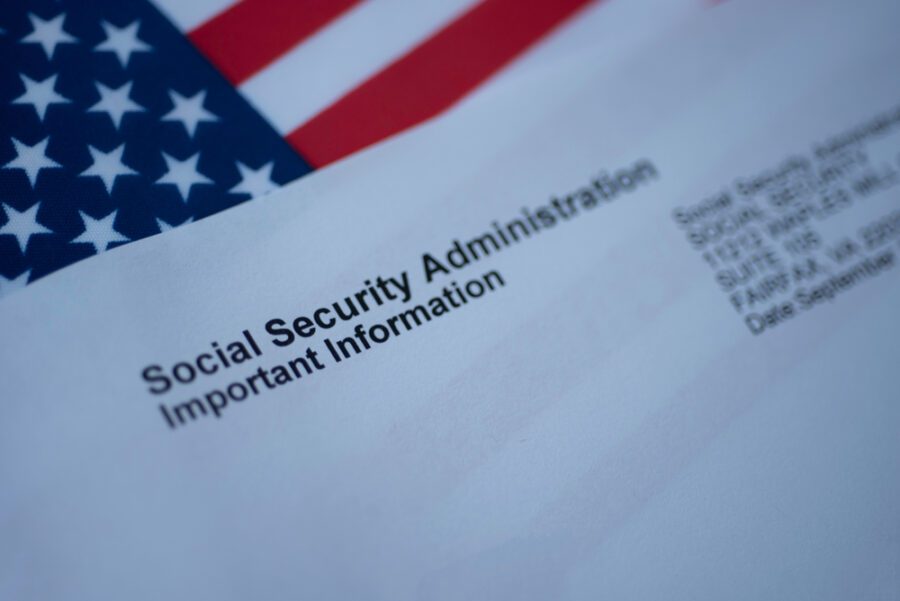Experts say seniors will face a couple of tax changes in 2025! Let’s take a look!
As we approach 2025, many seniors are gearing up for what they hope will be a smooth year. But hold on—there’s an unexpected tax change on the horizon that could catch you off guard. If you’re a senior, you MUST read this article, because it contains important updates.
As you already know, the shifts in retirement planning result from the Congress’ passage of the SECURE Act in 2019 and SECURE 2.0 in 2022, which significantly strengthened and expanded the retirement savings system in the United States. This includes provisions to boost the required minimum distribution (RMD) age from 72 to 75, expand the automatic enrollment in retirement plans, and develop 403(b) plans.
While we can already see the effects of some changes, you can expect more things to come by 2025. For instance, experts say there will be major changes to Roth, IRA, 401(k), and other retirement savings plans.
Don’t worry, because we’re here to help you understand exactly what to expect and how to prepare. Whether you’re planning for your golden years or just want to stay informed, our guide is exactly what you need to be on top of your game. So, without further ado, here are all the tax changes you should expect in 2025.

1. Higher catch-up contributions for older workers
Did you know that under Section 109 of the new law, individuals who are at least 50 years old can make a $7,500 catch-up contribution to a workplace retirement plan? This can help them build their savings for retirement more quickly. According to financial experts, this catch-up contribution increases to $10,000 annually for citizens aged 60 to 63. However, after 2025, those amounts will be adjusted for inflation.
Keep in mind that Roth catch-up rules were supposed to start being effective in 2024. To make things clear, the IRS announced that Roth catch-up contributions for high earners who are at least 50 years old won’t take effect until 2026.
2. Automatic 401(k) enrollment
The Secure Act 2.0, Section 101, mandates that companies with over ten employees must automatically enroll eligible employees in the retirement plan at a minimum contribution rate of 3%. This tax change could be helpful for employees who want to save for retirement.
Even though there are a few exceptions for small businesses, SECURE 2.0 required 403(b) and 401(k) plans to automatically enroll eligible people. However, they can always say they don’t want to participate. According to the Labor Department, the tax benefits associated with 401(k) participation play a significant role in helping small businesses retain and recruit employees.
3. Employer matching
A while ago, employers who wanted to match their workers’ retirement contributions were limited to making contributions to pretax funds, like a typical 401(k). Nowadays, things are different. Under Secure Act 2.0 Section 604, employers have the option to match payments made directly to an employee’s Roth 401(k) tax-free. This tax change allows for additional flexibility in retirement planning without affecting the tax status of those contributions.

4. A new tax credit for lower-income savers
Let’s continue with these tax changes because this time is all about the lower-income savers. If you’re familiar with the Secure 2.0 Act we’ve previously mentioned, you know it includes a saver’s tax credit that’s made to help lower-income earners boost their golden years savings.
Starting in 2027, the new law will have the federal government matching contributions to retirement accounts. This change could boost seniors’ retirement savings by increasing the total amount saved rather than offering an immediate tax break, which is pretty good.
…What are your thoughts on this one? Do you think it could be beneficial in the long run? Let us know in the comments below!
5. Emergency withdrawals
According to Section 127 of the Secure 2.0 Act, employers can now help their low-earner employees by linking their golden years plan to an emergency savings account. This means that employees will find it simpler to take money out of their retirement accounts in certain authorized emergency scenarios without incurring penalties or taxes.
Even though the employer sets the cap on these annual contributions at $2,500 (or less), there are no taxes or penalties on the first four withdrawals made during the year. If you’re a concerned investor and don’t like unexpected expenses, you’ll probably like this tax change.
6. Converting school savings to retirement savings
In the past, people who had 529 college savings accounts might’ve been penalized if they took money out for non-educational purposes. But these 2025 tax changes might be exactly what many seniors needed.
According to Section 126, 529 beneficiaries might now, after 15 years, roll over money into a Roth IRA in certain circumstances. However, keep in mind that the yearly contribution cap for an IRA is $35,000, and the total amount contributed can’t exceed this cap every year.
This might increase the appeal of 529 plans for those who are not sure how much college will cost or who aren’t enrolled in school.

7. Social Security’s wage cap
As we all know, Social Security is funded by payroll taxes. But it doesn’t mean workers will automatically pay those taxes on every cent they earn. According to financial experts, a wage cap is implemented each year, and it serves several Social Security tax purposes. As sources say, the current wage cap is $168,600.
However, in 2025, that figure is expected to rise to account for inflation and salary growth, just as the earnings-test limit. Higher earners should therefore get ready to lose a larger portion of their income. If you’re part of this group, make sure you check out the SSA’s websites for updates and news, so you can be prepared for any upcoming tax change.
8. Earnings-test limit
Seniors who work can boost their monthly Social Security payments with income from their jobs. Moreover, once you reach full retirement age, you can earn any amount of money without affecting your monthly Social Security benefits.
Experts say that if you work and claim your Social Security benefits before reaching full retirement age, you might expect a few tax changes, aka the earnings-test limit. To put it simply, exceeding that limit will typically result in having a portion of your benefits withheld.
However, you could get those withheld benefits back once you hit full retirement age. But it’s important to know how much money you can earn from a workplace before that scenario comes.
The current earnings-test limit is $22,320, or $59,520 for people who will reach full retirement age by the end of 2024 but haven’t yet attained it. Even though these figures are anticipated to increase in 2025 following inflation, you should be aware of the particular cap that applies to you.
Conclusion
If you want to be on top of your game and not taken by surprise by any of these unexpected tax changes, I recommend you stay tuned for our future posts. Don’t forget to set monthly budgets, save as much as you can without depriving yourself of the things you want, and have fun doing so (it will be easier and more enjoyable to reach your financial goals).
And if you need an extra income source to make your golden years better, here’s a book that will inspire you. What do you think about these unexpected tax changes that seniors will face in 2025? Let us know in the comments below! If you find this post helpful and would like to check out something else from Retired in USA, here’s a good article for you: 6 Kamala Harris Tax Reforms That Could Affect YOU










Good information about everything and very useful information I didn’t know about
You know that white swirly stuff you see in chicken poop? You know what that is? It’s chicken poop too. T.I.S